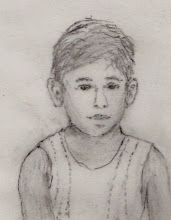Remarks on the estuarine
hydrographic and sedimentary system
– artificial as well as natural estuaries
all my blogs are listed here:
http://mein-abenteuer-mein-leben75.blogspot.com/
All that I mentioned in the Eurytemora paper below refers to canalized estuaries. They are entirely artificial and do not necessarily, or not at all, show the natural situation of an estuary. The following remarks have the rank of a hypothesis that has still to be tested and veryfied.
In nature there are various types of estuaries but many of them can be classified into two main categories according to water types, water flow, sediments and sediment transport and shore form : 1) those that flow in a soft bed and 2) others that flow over or around solid hinderances like rocks or hard bed or mountains or in the fresh water area, trees. What does „soft bed“ mean? All sediments are sandy or muddy and can be lifted by the currents and transported to other places within the estuary or into the sea – whenever there is more water to flow through than the bed form allows at this very moment.
So estuaries that flow in a soft bed may change the form of the bed constantly. A characteristic of them (like for similar rivers) ist that the beds flow in meanders that are permanently changed in their meandric forms. It is obvious that this form exhibits the least strain against the flow, inner and outer friction are smallest and inner and outer tubulence are at minimum. So the stretched canal suffers more resistence than the meandering river. Look only on a car screen when water droplets flow down after a rain or during car washing. This has early been observed when in the North West of India (now Pakisthan) the British engineers constructed long long water canals in the desert sands that again and again changed their bed into meanders. They were meant to irrigate cotton fields.
We do not know much about undisturbed coastal plain estuaries flowing in a soft bed (i.e. without rocks). They seem to be the basic form of an estuary, and studying them may supply us with the deepest insights into the estuarine nature. Most studies have been done in canalized estuaries and may not be really descriptive for „undisturbed (natural) coastal plain estuaries“ in a tidal area.
Such tidal undisturbed coastal plain estuaries (tucpes) flow in ever changing meanders, may hardly have the often observed system consisting of a permanent salt wedge, a mud reach and a turbidity maximum. The flowing water searches for a bed for which it needs the least energy, and this is of the meander type. To obtain this, sediments are permanently reloaded and transported to places with the least turbulence, because the conditions vary permanently: depth, current direction and speed, turbulence, salinity, temperature and viscosity etc. These estuaries are almost not at all polluted by man's technical products, organic waste, or erosive products, they harbour a natural population of species, habitats, including shore habitats, as well as particulate and dissolved species in natural constitution.
In tucpes there are many small creeks and tributaries, back waters, muddy places and reed forests or forests like mangroves etc. In case of freshets or marine gales, a wide range of temporarily flooded low lying land is available as flooding space, consequently in inland, heavy flooding is rarer than in canalized estuaries.
Land- and riverborne substances that are transported by the river, may underlay a soft change during their long stay in the estuarine environment, including swamp and mud areas. So finally they have adapted to marine conditions, much slower than in canalized estuaries or where river water falls directly into marine water such as in fjords.
If we really want to understand Eurytemora and its life, we must go to such an estuary. Not very far from your place there was such an estuary and perhaps still is: The Ogeechee between Savannah and Atlanta. I think, it is worth being studied, and perhaps a longer research plan should be started. May be it already has been done or exists.
In short, I do not know, I do not even have a hypothesis worth mentioning of what are the root causes for the observed peculiar distribution of Eurytemora affinis in our estuaries. But I hope that my letter will help to do better research on estuaries than we could do a generation ago.
by Aryaman Stefan Wellershaus
28th November 1997

Keine Kommentare:
Kommentar veröffentlichen